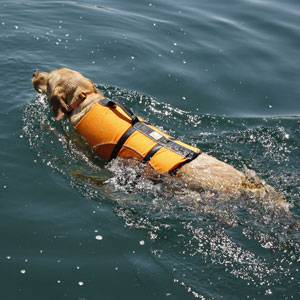Nothing is better than spending a lazy summer day on the lake or in the pool. If you’re going to be spending all that time on the water, however, you might as well make the most of it. A floating water mat is a must-have for all of your favorite water activities from lounging to swimming to boating.
Floating water mats are great, but premium models like the Rubber Dockie floating mat can be pricey. Depending on the materials, you could easily spend several hundred dollars on a floating mat big enough to accommodate you and your friends.
Why spend all that when you can make your own at a fraction of the price? Read on to learn how.

Floating Water Mat Materials
The most important piece of the puzzle in making your own floating water mat is the material. Choose the wrong material and your mat might degrade soak up water, degrade too quickly, or it might not float at all. It’s important to walk the line between quality and affordability here. If you’re making a DIY floating pad, you’re probably looking to save money but don’t skimp too seriously or you might regret it.
We recommend something like crosslinked polyethylene (PEx) foam because it is highly durable and both UV- and chemical-resistant. This makes it perfect for pool use as well as lake use. Avoid polyurethane foams because they will soak up water unless they are coated to make them waterproof.
Floating Water Mat Process
Before you commit to making your own floating water mat, do some research on pricing to see whether it’s worth the cost. Think about the dimensions you’re going for as well, determined by how you plan to use the mat. For a single person, 3-by-7 feet may be perfectly adequate but for group use you’re looking at something at least 6 feet wide and anywhere between 9 and 20 feet long.
Here are the steps to create your own DIY floating pad:
- Purchase your foam from an industrial foam supplier – go for something at least 1.5 inches thick. The thicker the foam, the more weight it will hold.
- If you plan to use your floating pad on a lake, purchase a tether kit or a snap grommet large enough to accommodate the thickness of your pad.
- Determine the placement of your grommet and create a hole using a Phillips head screwdriver or a similar tool.
- Thread one end of the snap grommet through the hole, slide the other half of the grommet into place, and snap or twist them together and attach your tether.
- Test your DIY floating pad in a swimming pool before using it in a lake.
- Start with one person on the mat and add one at a time to see how much weight it can safely hold. Here are some reference points:
- 6-by-9 feet: 4 adults
- 6-by-15 feet: 5 adults
- 6-by-16 feet: 6 adults
- 6-by-18 feet: 8 adults
- 6-by-20 feet: 9 adults
When making your own floating mat, safety should be your top priority. Even if your pad passes a stress test in a swimming pool, you should think twice about using it in a lake or another open body of water. In the end, it may be safer to purchase a floating mat designed for this purpose like the Rubber Dockie.
Floating Water Mat Final Thoughts
While making your own water mat for lake activities or pool use is certainly possible, there’s a certain degree of risk involved. You won’t know whether it works until you try it and, if it doesn’t, you may not be able to return the materials. And you certainly won’t get back the time you spent to make it.
In the end, it may end up being more economical (and less hassle) to purchase an affordable option like the Goplus Floating Water Pad Mat. With its three-layer, tear-resistant design this floating mat is simple but functional and the rolled-up sleeper design makes it ideal for lounging. Plus, weighing in at just 5.5 pounds, this mat is lightweight, and it rolls up for easy storage when not in use.
Though making a DIY floating lake mat might be a risk, the potential reward in terms of dollars saved is significant. If you decide to embark on a DIY journey, leave a comment below to let us know how it turned out!
Frequently Asked Questions
Why are floating mats so expensive?
A floating mat may seem like nothing more than a large foam pad, but there’s more than meets the eye. Premium floating mats like the Rubber Dockie floating mat are made from closed-cell foam which highly durable and has the potential to hold a significant amount of weight. The thicker the mat, the more weight it will hold but the more expensive it will be. Inflatable pads are cheaper but hold less weight.
What is a floating water mat made of?
For the most part, floating water mats are made of closed-cell foam or polyethylene. Because these materials can be pricey, a more economical option might be an inflatable water mat made of vinyl.
How much does a floating water mat cost?
You might be able to find a floating water mat for under $100, but it probably won’t be a good one. Premium floating pads can cost upwards of $400 but if you’re looking for an extra-large model with a high weight capacity you could easily spend $600 or more.


